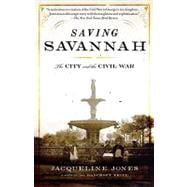
Note: Supplemental materials are not guaranteed with Rental or Used book purchases.
Purchase Benefits
What is included with this book?
| List of Maps | p. ix |
| Map of Savannah, Civil War Era | p. x |
| Antebellum | |
| Prologue: I Am in the Hands of Kidnappers | p. 3 |
| Sell and Buy and Sell and Buy | p. 25 |
| Our Common Master in Heaven | p. 51 |
| A Demon Ready with Knife and Torch | p. 71 |
| Let's See Her Face | p. 97 |
| In Bello | |
| An Abiding Hope in Every Breast | p. 117 |
| As Traitors, They Go Over to the Enemy | p. 140 |
| Are We Free? | p. 164 |
| We Have Dyed the Ground with Blood | p. 186 |
| Postbellum | |
| The Way We Can Best Take Care of Ourselves | p. 213 |
| Fori Have a Great Deal to Do | p. 233 |
| A Dream of the Past | p. 259 |
| To Have a Big Meeting, a Big Shooting,or Big Blood | p. 282 |
| The Present Deranged System of Labor | p. 302 |
| You Will See Them Studying | p. 327 |
| I Came to Do My Own Work | p. 346 |
| When You Leave Set Fire to All the Houses | p. 369 |
| epilogue:Those Peaceful, Powerful Weapons | p. 387 |
| Appendices | p. 411 |
| Acknowledgments | p. 417 |
| Notes | p. 419 |
| Selected Bibliography | p. 471 |
| Index | p. 495 |
| Table of Contents provided by Ingram. All Rights Reserved. |
The New copy of this book will include any supplemental materials advertised. Please check the title of the book to determine if it should include any access cards, study guides, lab manuals, CDs, etc.
The Used, Rental and eBook copies of this book are not guaranteed to include any supplemental materials. Typically, only the book itself is included. This is true even if the title states it includes any access cards, study guides, lab manuals, CDs, etc.
Excerpted from Saving Savannah: The City and the Civil War by Jacqueline Jones
All rights reserved by the original copyright owners. Excerpts are provided for display purposes only and may not be reproduced, reprinted or distributed without the written permission of the publisher.